Summary
- Time management for professionals
- What is the AGEC law ?
- 6 tips to better manage your pharmacy stock
- How to properly store your medicine cabinet ?
- How to choose your sun cream ?
- How to make a scrub at home?
- What are probiotics and what are their benefits?
- Ideas for an ecological gift for Father's Day
- How to estimate your needs before ordering?
- Stock 12 partner of TriMed's
- Essential oils, how to store them and how to recycle them?
- How to have an eco-friendly picnic ?
- How to tidy up your back office?
- Grow your own herbs at home
- How to calculate the carbon footprint of your company?
- How to act in case of a drug shortage on the market?
- Pharmacist, Continue to learn and update your knowledge !
- Day cream and night cream. What is the difference?
- Managing drug-related risks
- The latest advances in diabetes medications
- The Zero Waste
- How to successfully collaborate with other pharmacy professionals?
- Essential foods for our beauty
- How can we help patients to better understand their prescriptions?
- What happens to unused or expired medication?
- 6 questions about diabetes type 1
- 6 questions about Type 2 Diabetes
- Dietary recommendations for type 2 diabetics
- Mobile applications to help manage diabetes
Time management for professionals
How to manage your time well ?

What is time?
Time being defined in the dictionary by : "Duration considered as a measurable quantity" and the working time as being: "Limited part of this duration occupied by an activity".
In your case, pharmacists, it is the amount of time you spend each day managing your pharmacy.
Why should you manage your time well?
Often in professional language, we say that "time is money". Well, it's true. Good time management allows you to organize your work and thus improve your productivity, your output and ultimately your income.
In addition, good time management saves you a lot of stress, often due to delays in the completion of certain tasks, such as taking inventory of your unsold gooDefine objectives to be reached: for example: reduce losses, save money in order to improve your turnover, avoid waste, save time...
Tips for managing your time at work
- Define objectives to be reached: for example: reduce losses, save money in order to improve your turnover, avoid waste, save time...
- Define the actions that will help you to reach your objectives: for example, if your objective is to save time, you can define actions such as: reorganizing your stock of products, training new recruits to the organization of your pharmacy, implementing time management software...
- Plan your tasks according to their priorities: According to the most important objectives for you, it is essential to plan your tasks in time in order not to spread yourself too thin and to manage one task at a time.
- Use time management software such as Google Calendar, Trello, Evernote, Freedom...
- Take regular breaks: It is advisable to take breaks in order to clear your mind and gain in productivity and motivation.
- Involve your team: Teamwork is what saves time and money if the team is on the same page. So make sure that everyone working in your office understands your organization and knows how to use the hardware and software available to them. Above all, involve them in defining your objectives so that they understand the stakes and the importance of each task.
- Organize your product inventory: It is essential for a better organization of your activity, to properly organize your product inventory using the ABC method which allows you to classify your products by decreasing order of output. By putting the most requested and sold products in the most accessible place and inversely for the less sold ones.
- Make an inventory of your unsold products: There is no need to postpone this task every time because it does not save you time. Do the inventory on a regular basis, this will allow you to get rid of expired products and save space. Then classify your unsold products by expiration date to allow the sale of those closest to the expiration date in the first place to avoid any waste.
Time is of the essence in pharmacy
The notion of time is important in the workplace in general, but as you know, it is even more important in a pharmaceutical context.
Why? Because just like food products, health products have a use-by date, defined according to stability studies carried out to determine until what date after manufacture a product will retain its therapeutic and organoleptic properties according to the rules of European guidelines.
As you already know, the consumption of some types of drugs can be dangerous after expiration, while for others, the drug loses its effectiveness.
On the other hand, it is useless to throw away a product before it has reached its expiration date
Hence, the importance of including the notion of expiration time in your product management. Don't throw away your products too soon! Nor keep them beyond the expiration date!
What if we help you in all this?
TriMed's offers to help you sell your products close to the expiration date to pharmacists or individuals at a discounted price. This way, you save time, money and you also make a gesture against waste!
You want to know more? Visit our website www.trimeds.fr
What is the AGEC law ?
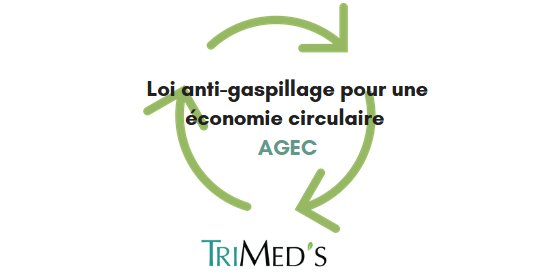
The anti-waste law for a circular economy (AGEC) has been launched since February 2020 with the objective of reducing waste and promoting a circular economy.
Since January 2022, new measures have been added to those already set in order to strengthen this quest for sustainable development and to raise awareness among companies by making them the main actors of this ecological transition.
What are these new measures? And what will change in 2022?
The AGEC law is mainly based on five main axes:
- Getting rid of disposable plastic
- Better inform consumers
- Fight against waste and promote reuse
- Fight against programmed obsolescence
- Better production
The implementation of all these measures is programmed over several years in order to operate a progressive and sustainable change.
Getting rid of disposable plastic:
This measure aims to remove single-use plastics from the market by 2040. To achieve this, the law will encourage the reuse and recycling of plastic materials and reduce its production in general by replacing it with biodegradable materials.
The law also signals the end of plastic packaging for fruit and vegetables and certain toys on children's menus. Just as it plans to support market players in their transition.
Better informing consumers:
A stronger device in 2022 that is intended to be transparent on more environmental information that would be of interest to the consumer such as repairability, compostability or recyclability.
Gone are the vague and misleading formulas on products. Make way for precise and clear information based on experiments and proven results.
Fight against programmed obsolescence:
The law obliges manufacturers to display the reparability index of each product and prohibits programmed obsolescence, which was aimed at encouraging the repurchase of products.
Various measures facilitate the availability of new and used spare parts for professional repairers and extend the legal guarantees of conformity.
Better production:
The law intends by this measure to extend the responsibility of manufacturers in the management of their waste by creating new channels that promote the reuse and recycling of their products and by modifying their manufacturing processes with the adoption of more environmentally friendly materials.
Fighting against waste and promoting reuse:
After drastic measures to fight against food waste with the "Garot" law of 2016, the AGEC law comes to tackle non-food waste with the objective of prohibiting the destruction of unsold goods.
Since January 2022, companies are obliged to promote the reuse of their unsold non-food products, the recycling or the donation in order not to waste them. This measure applies to textiles, electrical and electronic equipment, as well as to certain specifically targeted products such as books or hygiene and childcare products. The law intends to extend the scheme to other types of products by 2023.
TriMed's seizes the opportunity to allow pharmacists, sellers of hygiene, childcare and health products in general, to find a way out of their soon expired unsold products by selling them at a discounted price, or by giving them to associations against a receipt that would allow them a tax reduction on the year N+1. Whatever the choice of the pharmacist, he will be a winner by opting for a solution that allows him to respect the law, to gain in turnover, to reduce his losses and to do something for the environment by following a CSR approach.
You are a pharmacist and you want to know more? Visit our website on trimeds.fr
References : ZEROWASTE France and the website of the Ministry of Ecological Transition
6 tips to better manage your pharmacy stock
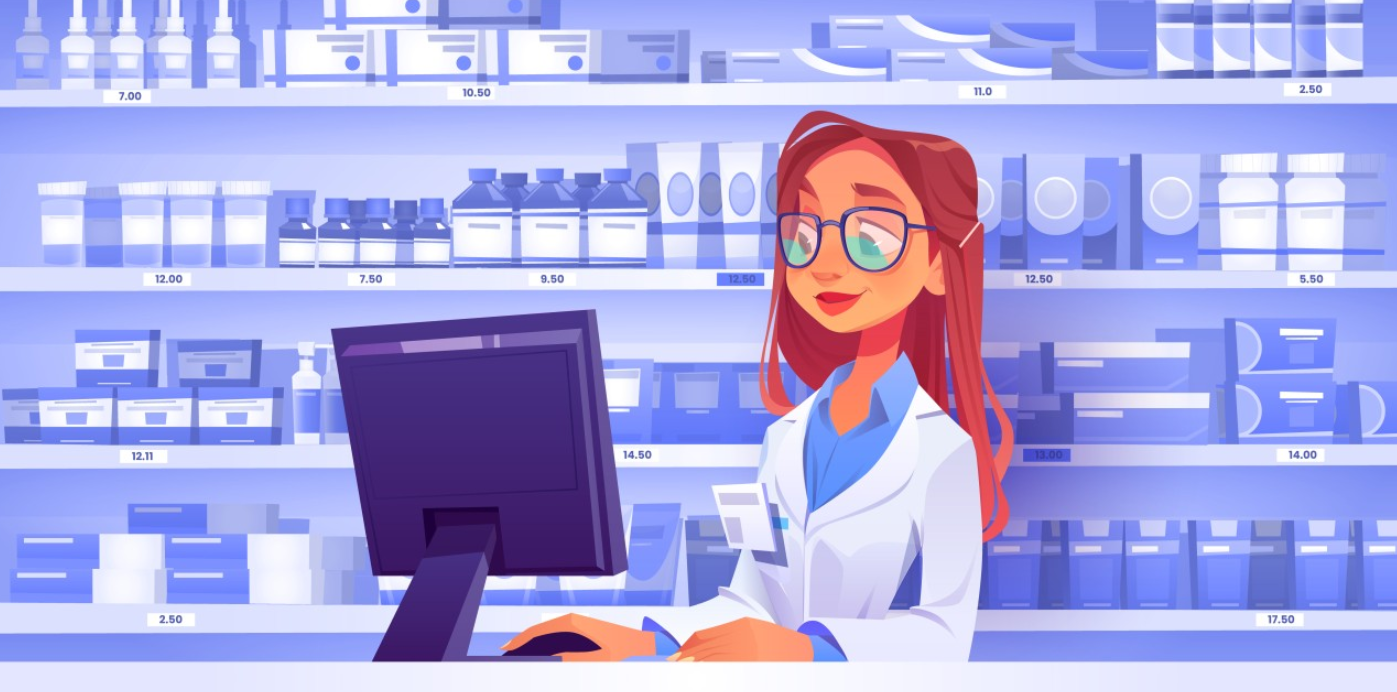
In the pharmacy, as elsewhere, organization is essential to optimize one's storage space, to reduce the time spent taking inventory and to reduce losses.
Quite often, a poorly arranged storage space means that certain products are forgotten and will never be sold, and are therefore discarded because they are out of date before they are sold. This is a considerable waste both in terms of turnover and the environment.
So to be better organized, it is better to make sure that your storage space is organized first.
TriMed's gives you 6 main advices to do it efficiently:
1- Organize your medications by zone
It's easier to find your way around if you classify your space by zone and store your medications in those zones. The choice of the type of classification is yours. You will choose the way you find your way around best, but we can already suggest some ideas: such as classification by typology, active ingredient, brand or category. Differentiate between sales space and storage space.
It is also important to differentiate between the refrigerated area, which is essential for certain types of products (such as vaccines), the areas where medicines must be protected from light and the classic storage areas.
2- Control the rotation of your products
It is a question of controlling the products that have a fast rotation and those that, on the contrary, have a slow or even too slow rotation. It is necessary to define the demand for each product in order to anticipate the orders. This will avoid overstocking or out-of-stock situations.
Using the ABC method in logistics can be useful. The principle consists in storing the drugs that have a fast turnover in Zone A (a zone that will be more easily accessible for the pharmacist), the drugs that are less in demand in Zone B (a zone that is less accessible than Zone A but that is still more or less quickly accessible when needed) and the drugs that are very rarely requested in Zone C (the one that is the least accessible in the storage space in order to free up space for the most important ones) This also allows you to have a global vision of your zones. Seeing Zone A almost empty, for example, should raise the alarm about the need to order products.
3- Take inventory of your stock regularly
You should not wait until every year to take inventory of your products, especially since health products often have an expiration date. Define a date per month to make an inventory of your products. This will allow you to anticipate the orders but also to manage your unsold products and to put the products closest to the expiration date forward in order to sell them in priority.
4- Always assign the same person to manage the stock
It is better to always leave this task to the same person who will also manage the orders with the suppliers and who will enter the data relative to the products in your computer management system. This is the person who will be able to understand the needs in terms of storage management and who will be able to supervise this as soon as the orders are received.
Moreover, if the same person is always assigned to the same task, they will not forget it and rely on someone else to do it for them . Needless to say, get the right person! The organized and responsible employee.
5- Adopt adequate storage devices
Instead of stacking boxes, why not use deep drawer cabinets? It helps to store more with boxes that are visible because they are stored side by side rather than stacked. If the drawers can be equipped with transparent sides, that's even better! It would help to see even if they are high.
Drawer cabinets are just one idea. You certainly have a multitude of choices. It's up to you to see what works for you and most importantly, what works for your storage space.
6- Boost sales of unsold products
It is preferable to boost the sale of your unsold products, especially if they are close to their expiration date.
Put in place promotions or an apparent dedicated corner in your dispensary.
TriMed's offers a much better solution. Put your unsold products on our online marketplace! You will give more visibility and a second chance to your products and you will gain turnover instead of losing money.
How to properly store your medicine cabinet ?

A medicine cabinet is an indispensable item in every home. But you need to know where to put it, what to put in it and how to store it.
TriMed's gives you all the necessary advice to organize your medicine cabinet.
First of all, it is essential to have a first aid kit at home, easily transportable in case of outing or travel. Of course, you will need to equip this kit with other items in case of travel (such as
medicines against motion sickness or seasickness...), but here we are going to indicate you the essential to put in it in any case.
Your first aid kit should contain
A skin antiseptic (spray or single-dose).
Sterile compresses.
Pre-cut bandages.
Hemostatic bandages (in case of nosebleed for example).
Stretch bandages (velpeau or nylex type).
Round-tipped scissors and splinter forceps.
Single-use gloves.
Aspirin and paracetamol;
A bottle of 70° alcohol;
A bottle of uncolored antiseptic.
Arnica for bruises (in case of fall)
A survival blanket.
Let's now look at the essential medicines and pharmaceutical products to have at home.
In your medicine box. You must have :
1 painkiller and antipyretic against fever like paracetamol (form adapted to the adult and form adapted to the child)
1 antihistamine (effective treatment against allergies)
1 medicine for difficult digestion
1 antispasmodic (calms muscular spasms, especially digestive and genito-urinary)
1 anti-nausea medication
1 intestinal antiseptic
1 anti-diarrheal
1 anti-emetic (acts against vomiting and nausea)
1 ointment against bruises
1 anti-inflammatory gel
1 box of heating patches
1 ointment or spray for superficial burns and/or sunburn
1 anti-itching ointment
1 local antiseptic
1 eyewash or eye antiseptic in pods
1 oral rehydration solution (for severe diarrhea)
1 mosquito repellent
1 box of saline solution in pods
1 medical thermometer
1 box of bandages
1 box of sterile compresses
1 roll of plaster
1 box of hemostatic pads (to stop bleeding)
1 pair of scissors
1 pair of tweezers or splinter tweezers
1 pair of vinyl gloves
1 survival blanket
1 box of condoms
1 hydro-alcohol gel
1 box of protective masks
The location of your medicine cabinet:
The location of your medicine cabinet is equally important for a better preservation of your products and a better security.
First of all, it is advisable to gather all your medications in the same place. A place that is protected from humidity, light and heat. Thus, it is preferable to avoid the bathroom and the kitchen.
Choose a place that is easy to access in case of an emergency (not in the cellar, for example, or on the top floor of the house). Your medicine cabinet should be placed in a secure location, locked and positioned high up to prevent access by children.
The storage of medicines:
How to properly organize your medicine cabinet now? This question is as important as the previous ones.
It is important to keep medications in their box with the instructions inside so that you can have an overview of the expiration dates often printed on the box itself.
Vaccines and some opened medicines should be kept in the refrigerator, such as
reconstituted antibiotics.
Organize your cupboard to separate medicines for children from those for adults
and for better efficiency in case of emergency, classify them by pathology.
It is also a good idea to arrange the boxes so that you can read the name of the medication on them without having to take out all the boxes by filing them side by side rather than one behind the other.
If you have several boxes of the same medication, it is best to put the ones with the closest expiration date in front of them to get rid of them first.
The expiration date of medications:
It is essential to check the date mentioned on your boxes or bottles of medication and respect it scrupulously. It is strongly recommended to sort out your medication once every 6 months in order to get rid of expired medication (Be careful! do not throw your expired medication in the garbage, do not pour them down the sink or in the toilet, bring them to your nearest pharmacy instead. There is bound to be a Cyclamed box waiting for you to collect expired products. This is important to avoid contaminating the environment and for a better recycling of these products).
Some medications can be kept for a short time after opening. This is the case for eye drops, oral solutions and syrups. Whenever possible, use single-dose formats.
Caution! Do not use medicines that have changed in appearance (color, smell...).
If you have any questions, or if in doubt, always ask your pharmacist for advice.
How to choose your sun cream ?

When the sunny days arrive, many of you go on vacation, to the sea or the mountains, or simply to enjoy the outdoors during picnics or outings with family or friends. You are surely also looking for a sun cream adapted to your needs to protect you from the sun rays. TriMed's gives you its advice to choose your sun cream.
1 - Why a sun cream?
We all know that the sun can have beneficial effects on our mood and our health but it can be very dangerous especially when we are exposed to it for a long time or on a regular basis. Indeed, several scientific researches have shown that UV rays accelerate skin aging and that they are responsible for more than 80% of skin cancers according to the International Agency for Research on Cancer. Thus, protecting yourself from the sun's rays is essential if you want to preserve your health and therefore the use of a good sun cream is essential, not only on vacation but preferably throughout the summer.
2 - Sunscreen, which protection?
Sunscreen creams are sold in pharmacies, parapharmacy or supermarkets in different forms: gel, oil, cream, spray... It is not really what counts the most because it will depend on your preferences and what seems more practical for you. For example, if you don't like to spread that white cream on your skin and keep that whitish look, then go for the oil which is rather transparent.
But what matters most in your choice of sunscreen is the protection factor (PF) also called sun protection factor (SPF). This indicates the cream's ability to filter out UV rays. The higher the index, the greater the protection. The protection index varies from 6 - 10 (the weakest protection) up to 50 + for the best protection.
best protection.
Generally, the protection you choose will vary depending on your skin type and exposure conditions.
But if we have one piece of advice to give you. Focus on SPF 50 + for complete protection in all cases.
3 - UVA and UVB protection
These are two types of sun rays that act differently on your skin. UVB rays are the ultraviolet B rays responsible for sunburn and directly responsible for skin cancer. And UVA or ultraviolet A rays are responsible for premature aging of the skin. Both remain dangerous even if one seems more dangerous and has a more visible effect than the other. We therefore advise you to choose a cream that protects against both types of rays.
To do this, you should look for creams with the UVA logo, which indicates the latter protection, as a high index cream protects against UVB anyway.
4 - Other recommendations :
Of course, you should not expose yourself to the sun for long periods of time just because you have put on sunscreen because sunscreen, although it protects you, does not filter out 100% of UV rays and you must take the right precautions. Avoid exposing yourself between noon and 4pm (the time when the sun is most dangerous)
Finally, if you are at the beach or pool and your sunscreen is likely to wash off quickly with the water, don't forget to reapply it every two hours extend the protection.
We hope that these recommendations will help you find your sunscreen for this summer and protect your skin.
List of our discounted sun creams :
- GALENIC SOL 50+ (40ml) 50% off
- GALENIC SOLAIRE LAIT SPF50/ 100ML 50% off
- Lot Lierac protection solaire 50% off
- Crème solaire NIU - SPF50+ à 70% off
Reference : www.economie.gouv.fr
How to make a scrub at home?

The scrub is a technique of purification of the skin which is used to restore its brightness and its beauty.
This technique consists of using an exfoliant that will eliminate the dead cells accumulated on the surface of the skin. This activates the blood microcirculation, oxygenates and better nourishes the skin cells, because once the dead cells that were clogging the skin and blocking its pores are removed, the skin will take better advantage of the active ingredients contained in the care products that are given to it. It will then appear softer and more radiant.
Moreover, the effect of the scrub is immediate. No need to wait weeks to see the result on your skin. So why deprive yourself?
While many cosmetic products are expensive, exfoliation will cost you nothing if you follow our tips. You have everything at hand in your kitchen to make a mixture at home that will serve as a base for your scrub.
First of all, you need to know that a scrub is a mechanical action that consists of using an exfoliant that often has a granular texture and making circular movements in order to clean the skin. Considering that this technique is a bit abrasive for the skin if it is repeated at close intervals. Therefore, we advise you to do it once a week to give your skin enough time to rest.
You should also know that a scrub can be done for the whole body or only for the face. Everything will depend on your desires and your needs.
To make a scrub at home, you must use mainly :
- Oil (the one you prefer: olive, argan, hazelnut, almond ...)
- Sugar (or other granular exfoliant)
This is enough for a simple scrub for all skin types. However, some skins have more specific needs and for which we can add some ingredients to our base.
For sensitive skin and dry skin: Using honey in addition to the scrub will soften the mixture and help moisturize dry skin.
For oily and/or acne-prone skin: Using oatmeal helps absorb excess oil.
To help get rid of blackheads, add a few drops of lemon known for its antibacterial properties.
By applying these few tips, you will have a soft, beautiful, luminous skin instantly and without too much expense.
Moreover, with a mixture made at home, with natural products and zero waste for the environment :)
To help protect the environment, TriMed's also offers short-dated scrubs at attractive prices. You can consult our list of scrubs here
What are probiotics and what are their benefits?

Probiotics also called "good bacteria" are living organisms naturally present in our body and play an essential role in the balance of our intestinal flora thus strengthening our organism. They also help balance certain functions in our body and fight against discomforts such as poor digestion, constipation, allergies, infections ... Where can we find probiotics and what are their benefits on our body?
Probiotics are bacteria (Lactobacillus, Bifidobacterium, Streptococcus...) naturally present in the body and more precisely in the intestines.
The presence of these micro-organisms, known as "beneficial" for our organism, allows us to maintain the balance of our intestinal flora and thus of our entire organism. The slightest imbalance in these bacteria, for example by an excess of them, causes an imbalance in the body which can result in visible problems such as poor digestion, constipation, stress, allergies, repeated infections, depression...
This is why it is important to maintain a balance in the number of these bacteria and when there is not enough, an external contribution can be beneficial.
How can this be done?
Either by consuming foods rich in probiotics such as fermented milks, yogurts and kefirs which are excellent sources of probiotics. This is also the case with sauerkraut, brewer's yeast, fermented vegetables, carrots, beets, radishes, peppers and sourdough bread.
Or by using probiotic-based food supplements such as brewer's yeast for example. Pharamcies and parapharmacies are full of different supplements that respond to a specific need according to the contribution of each bacterium. Just ask your pharmacist for advice.
What are their benefits?
They promote good digestion and regulate intestinal transit
They stimulate immunity
They promote the synthesis of vitamins B and K.
They prevent the recurrence of vaginal mycosis.
They fight against gastroduodenal ulcers.
Their consumption in parallel of an antibiotic treatment allows to fight against the side effects of the latter
They would play a role on certain neuropsychiatric diseases such as anxiety, depression and bipolar disorders.
Some research even suggests that they may have a role in cancer prevention.
Skin porbiotics help strengthen the skin barrier and even seem to have an anti-aging role.
A particular strain of probiotics called Lactobacillus gasseri would be a beneficial contribution to help lose weight.
According to a New Zealand study published in March 2017 in the "British Journal of Nutrition," consumption of the strain Lactobacillus rhamnosus HN001 helps regulate blood sugar levels in pregnant women, reducing the risk of developing gestational diabetes.
Do probiotics have any adverse effects?
No study has shown any real side effects to consuming probiotics, except for some inconveniences such as bloating or gas that may occur
and to get rid of them, you just have to reduce your consumption dose and of course, you have to make sure that the food supplement does not contain
a product to which you could be allergic like soy for example.
How often should I take it?
If you need to consume a food rich in probiotics, you just have to make sure you eat a balanced diet and vary your nutritional intake.
If your probiotic intake comes from food supplements, plan a one-month course of treatment to be repeated as needed and ask your pharmacist for advice.
Discover TriMed's probiotics at discounted prices here
Reference : observatoire-sante.com and journaldesfemmes
Ideas for an ecological gift for Father's Day

Ideas for an eco-friendly Father's Day gift
Father's Day is coming up. An occasion to show your dear parent all your love and gratitude.
But if you do it in an ecological way, respecting the environment, it would be even better, right?
TriMed's proposes you a selection of several ideas of ecological gifts for the father's day:
1- A greeting card: Nothing more simple. We are not talking about a card bought in a bookstore or in a supermarket, no! You have to put your personal touch on it!
To do this, take your card stock, pencils, markers and use your imagination. Your dad will appreciate this personal gift and the kind words it will contain.
2 - A custom pencil cup: Nothing is more practical to put his pens in and easier for you to make. A tin or glass can, some paper or fabric to cover it all, some accessories for the decoration and there you go.
3 - Photo holder: an idea to decorate his desk or bedside table and at the same time remind him of his loved ones? There is nothing like pictures to hang them.
You can use old figurines that you have or knick-knacks to which you will hang a big magnet, then put your photos in small magnetic frames and put them on your figurines.
4 - A wooden stool or a toolbox: if you are a handyman at heart and you are not afraid to handle tools, then a wooden stool would be a good and practical idea that will surely be a success!
If your dad is also a handyman then a wooden toolbox with compartments to store tools would be another good idea to consider.
5 - A leather pouch: Another practical idea. All you need is some leather, buttons to close your pouch and some sewing skills and you can make a small object that will serve as storage for his papers, cables or glasses.
6 - A video compilation: If you are a digital enthusiast, video and photo editing software, don't go any further! This idea is made for you!
Make a selection of the best souvenir photos and make a small movie with photos scrolling on a background with his favorite music, some animations and there you go, the trick is done and the emotion will undoubtedly be there.
7 - A personalized mug: A simple white porcelain mug to which you add your personal touch with non-erasable paint and your gift will be personalized.
We hope our ideas can help you find the perfect Father's Day gift and we congratulate you on your responsible choice!
Discover TriMed's gift ideas for Father's Day:
How to estimate your needs before ordering?
In your pharmacy, as in a company, it is essential to estimate your needs before ordering your products in order to avoid overstocking or understocking. As we all know, both are bad for your business.
In this article, we will provide you with useful tips to help you better manage the frequency of your orders and estimate your needs according to the demand.
The disadvantages of overstocking and understocking:
If you order too many products, you risk overstocking and this can lead to additional storage costs, not to mention the space that all that unnecessary inventory can take up, the increased risk of expired items if unsold and the money lost unnecessarily.
On the other hand, if you don't order enough, you risk quickly running out of stock, losing your customers and thus money and your reputation can be tarnished if this becomes recurrent.
To avoid all this, you just have to know how to find the balance between the two so as not to order too much or too little.
1 - Know your customers:
It is important to follow the flow of products in the pharmacy according to the demands of your customers. You must know your customers' habits, needs, profiles and desires. This allows you to anticipate the demand and especially to know which types of products and brands are more popular with your customers in order to concentrate your orders on them. It is also important to gather feedback from customers. This allows you to know which products to order again and which ones to avoid.
2 - Know your market:
Follow the market trend, the products that are more successful than others, the brands that have gained more trust from users, alternative products... This allows you to know where to concentrate your purchases, especially when it comes to orders for parapharmaceutical products and new products. It is better to get information before ordering
3 - New products with parsimony:
A new product on the market? Do you want to test it? It's tempting and it can bring you more if it is successful and you are among the first to sell it, but our advice is to go gradually. Order a small quantity at the beginning to test, see if the product sells with your customers and if it is the case increase gradually the quantities thereafter according to the demand.
4- Use inventory management software:
It is important to have an inventory management software for your pharmacy, this will allow you to easily note the products as soon as they are received by entering their quantities and especially their expiration dates in order to have an overview on the duration of the products' validity. As in the food sector, this aspect must be closely monitored and taken into account in the ordering and restocking process. There are many software on the market such as LGPI, Win Pharma, Actipharm, SmartRX and many others that normally allow an automatic update of the stocks according to the outputs.
For the management of your stock of soon to be expired products, TriMed's offers you the solution. As most of the software do not offer you a concrete solution for the management of expiry dates, we propose you to sort out your stock and to put online on our platform your products approaching the expiration date in advance to sell them. This will avoid the risk of forgetting them and finding them expired after a few months and good to throw away. (For more information, visit our website trimeds.fr
5- Analyze your stock :
Stock management software allows you to enter data and update quantities, but you still need to know how to analyze this data in order to take advantage of it. Use the Pareto method which consists in analyzing the 20% of your products that bring you 80% of the profit. This way you will know the importance of managing these products in priority so that you never run out of stock.
The ABC method, which is also part of the Pareto principle, consists of segmenting your products into three categories: A for those that sell the most and earn the most, B for those that sell moderately and earn moderately and C for those that sell the least and earn the least.
In this way, you know that the products in category A will need to be checked more regularly, the products in category B will also need to be checked less frequently and then there are the products in category C that you should avoid ordering quite often because you now know that they don't sell much. The advantage of knowing them lies in the fact that you know which category would need priority attention regarding the control of its expiration dates.
6 - Calculate the order point:
The order point is the quantity from which you will have to reorder your product in order to avoid stock-outs. It takes into account the replenishment time, i.e. the time needed to bring the products from the suppliers to your pharmacy from the order date. For example, if your products take about 15 days to get to your pharmacy from the day you place your order, then plan to restock 15 days before your stock runs out. Also take into account the consumption time, i.e. the average of the products consumed per day of the concerned product category. This is easily calculated from the quantities sold per month and allows to have an overview on the sales forecasts per day and then during the 15 days before ordering. The formula used to calculate the reorder point is: replenishment time * consumption time + safety stock
7 - Calculate your safety stock:
It is important despite a meticulous management to provide a safety stock because we are never safe from a hazard of life. A supplier out of production, a late delivery, a record sale... You need to have some products on hand for this kind of situation and this is what we call the safety stock. To calculate it, you need to take into account the maximum daily sales. This is translated in your sales history by the maximum quantity that you have sold of a given product in one day. Then also the average daily sales (i.e. the average sales of a given product per day) and calculate this as follows:
maximum daily sales - average daily sales + supply lead time.
This will give you the quantity of the safety stock that you will add to your order point formula to know the alert quantity from which you should program your next orders.
A good stock management allows a better flow, and better working conditions. So don't hesitate to put these tips into practice and think about the trimeds solution to ensure an anti-waste management within your pharmacy as well. You will reduce your losses even more and you will register your company in an ecological approach respectful of the environment.
Stock 12 partner of TriMed's

We are proud to announce our new partnership with Stock12
Since its creation in 1975, STOCK12 is a family business that satisfies many pharmacists thanks to the recognized know-how of its two founders.
The tools used during the inventory survey proposed by STOCK12 have gained in precision and relevance. Another revolution, the data processing, today the programs developed within their company provide a total readability and statistical analysis of a rare efficiency: comparison with previous years, proposal of pharmacies of the same profile, management of stock, unsold and unsaleable ...
Teams receive specific training on pharmaceutical inventory and inventory entry methods.
STOCK-12 accomplishes 6 different types of missions:
- Balance sheet inventory: Inventory established at the end of the fiscal year in order to close your balance sheet.
- Pharmacy transfer: Inventory carried out at the time of the sale of your pharmacy.
- Inventory management: Inventory carried out to start or correct the computerized management of your pharmacy's stock.
- Rental: Method intended for pharmacists wishing to do their own inventory at a lower cost.
- Audit : Check the computerized inventory of your pharmacy for the closing of your balance sheet.
- Logistical support : Fill a punctual need for manpower thanks to qualified personnel.
You will have understood it thus, this partnership will make it possible to increase our community and will make it possible to Stock 12 to propose to their customers sustainable and ecological solutions for the management of their unsold goods.
If you want to know more about Stock 12, don't hesitate to visit their website at: www.stock12.com
Essential oils, how to store them and how to recycle them?
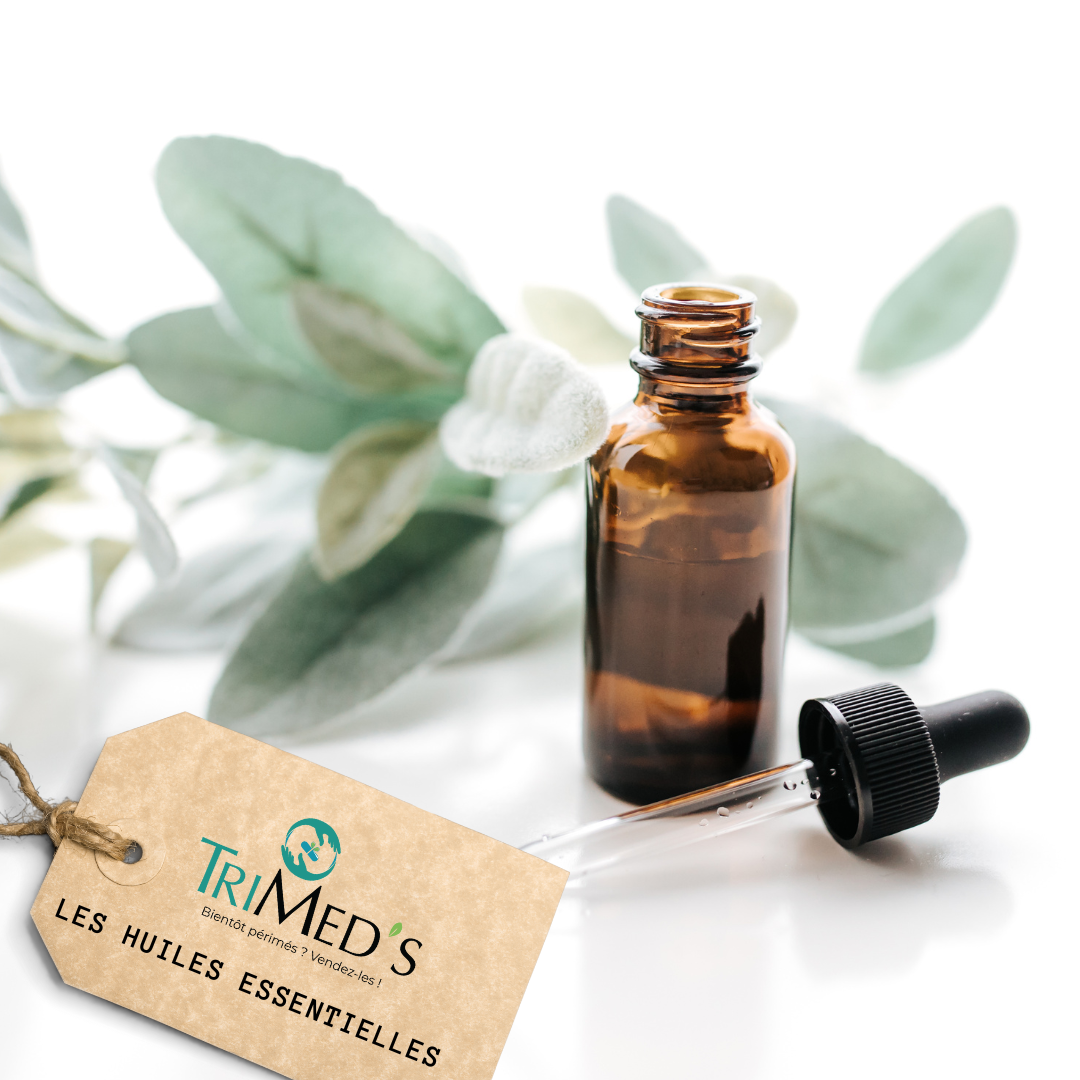
What are essential oils used for?
An essential oil is a liquid and aromatic extract generally obtained by steam distillation from a plant, and which concentrates its volatile active ingredients. Essential oils are useful for health (they work in a preventive way by stimulating the immune system so that your body fights more effectively against bacterial and viral infections. They can also be used to perfume or purify the atmosphere, for your beauty and well-being, but also to season your dishes or to use to make products for the maintenance of your house.
How to store them?
For a good conservation of essential oils, it is advised to keep them in a well closed glass bottle, away from light and heat. Some more sensitive oils such as citrus essential oil would be better kept in your refrigerator for a better durability. Be aware that pure and well preserved essential oils cannot be subject to bacterial development and can therefore be consumed without problems a few months before their expiration date and even after. Indeed, the expiration dates written on your bottles are more of a regulation to respect than a real danger.
However, it is always advisable to check their texture, smell and color before any use.
How to recycle them ?
In order to fight against waste and to preserve the environment, we recommend you to recycle your essential oils which you do not use any more. You can still use them to perfume and sanitize your house (a drop in your floor product, on a handkerchief to perfume your cupboards or in a home fragrance diffuser...)
At TriMed's we sell essential oils coming from pharmacies and parapharmacies at a reduced price (from -50%).
Want to know more? Visit our catalog here
How to have an eco-friendly picnic ?

When the beautiful days are here, our desire to enjoy convivial meals outside is there.
We can't talk about the outdoors without talking about protecting the environment, because yes, even while picnicking, we can do something for the environment if we do it responsibly.
In this article, we will give you the best tips for a responsible and ecological picnic.
1 - Cloth napkins and tablecloths
It is always better to use a cloth tablecloth and napkins. Washable, you don't have to throw them away after use and they are certainly more pleasant and efficient to use than disposable paper tablecloths and napkins.
2 - Homemade food is better
Cook your own homemade meals for an ecological and especially healthy picnic. Because there is nothing better than preparing dishes with vegetables and fruits in season that would be fresh and good.
Cooking also allows you to avoid all the cardboard or plastic packaging that is used to wrap the products you buy ready-made. You take your little tupperware with you and leave with it. Don't forget the amount of CO2 that could be avoided by not having to deliver or pick up ready-made meals.
3 - Use seasonal products
To prepare your meals or desserts, no need to remind you to buy seasonal products. It is the pillar of responsible consumption and the fight against intensive agriculture.
It allows you to better respect the seasons and the natural cycle of nature and to consume healthy products.
4 - Reusable containers
Well, as previously mentioned, do not hesitate to use reusable containers for your picnics to avoid unnecessary waste. Use water bottles
instead of plastic bottles for your liquid contents as well. If you can use glass containers to avoid plastic, it will only be one more gesture
to promote eco-responsible consumption.
5- Cloth bags for take-out
Now that your dishes are ready and your contents filled, all that's left to do is to take everything away before going to your picnic spot. Use cloth tote bags. They are
useful, practical, reusable and more durable for carrying heavy weights than cardboard or plastic bags.
6 - Take advantage of the picnic to do outdoor activities
Detach yourself from your mobile devices and your daily occupations, along a picnic and enjoy the nature that surrounds you. Enjoy the scenery and enjoy some outdoor activities such as hiking to explore the surrounding area or collecting herbs. This will help you use less energy and decompress.
7 - Pick up your trash before you leave and take it with you
Of course, once your picnic is over and you've enjoyed a good, relaxing time, don't forget to pick up your trash. There will probably be very little or none if you follow the tips above. However, bring a bag for your waste and take it with you to put it in one of the selective sorting garbage cans.
With these simple gestures, you will be able to enjoy a good moment of relaxation, with a good healthy and complete meal while respecting the environment and acting responsibly.
How to tidy up your back office?

In the pharmacy, as elsewhere, organization is essential not only to better find one's way around during the exercise of the activity, but also to optimize one's storage space, to reduce the time spent taking inventory and to reduce losses. Quite often, a poorly arranged storage space means that certain products are forgotten and will never be sold, and are therefore discarded because they are out of date before they are sold. This is a considerable waste both in terms of turnover and for the environment.
So to be better organized, it is better to make sure that your storage space is organized first. TriMed's gives you 6 main tips to do it efficiently.
Organize your medications by zone
It's easier to find your way around if you opt to classify your space by zone. And classify your medications in these zones. The choice of the type of classification is yours. You will choose the way you find your way around best, but we can already suggest some ideas: such as classification by typology, active ingredient, brand or category.
Differentiate between sales space and storage space.
It is also important to differentiate between the refrigerated area, which is essential for certain types of products (such as vaccines), the areas where medicines must be protected from light and the classic storage areas.
Controlling the rotation of your products
It is a question of controlling the products that have a fast rotation and those that, on the contrary, have a slow or even too slow rotation. It is necessary to define the demand for each product in order to anticipate the orders. This will avoid overstocking or out-of-stock situations.
Using the ABC method in logistics can be useful. The principle consists in storing the drugs that have a fast turnover in Zone A (a zone that will be more easily accessible for the pharmacist), the drugs that are less in demand in Zone B (a zone that is less accessible than A but that is still more or less quick to access when needed) and the drugs that are very rarely in demand in Zone C (the one that is the least accessible in the storage space in order to free up space for the most important). This also allows you to have a global vision of your zones. Seeing Zone A almost empty, for example, should raise the alarm about the need to order products.
Make an inventory of your stock regularly
You should not wait until every year to take inventory of your products, especially since health products often have an expiration date. Define a date per month to make the inventory of your products.
This will allow you to anticipate orders but also to manage your unsold products and to put the products closest to the expiration date forward in order to sell them in priority.
Always assign the same person to manage the stock
It is better to always leave this task to the same person who will also manage the orders with the suppliers and who will enter the data relating to the products in your computer management system. This is the person who will be able to understand the needs in terms of storage management and who will be able to supervise this as soon as the orders are received.
Moreover, if the same person is always assigned to the same task, they will not forget it and rely on someone else to do it for them. Needless to say, get the right person! The organized and responsible employee.
Adopt proper storage devices
Instead of stacking boxes and cartons, why not use deep drawer cabinets? It helps to store more with boxes that are visible because they are stored side by side rather than stacked. If the drawers can be equipped with transparent sides, that's even better! It would help to see even if they are high.
Drawer cabinets are just one idea. You certainly have a multitude of choices. It's up to you to see what works for you and your storage space.
Boost sales of unsold products
It is better to boost the sale of your unsold products especially if they are close to their expiration dates.
Put in place promotions or an apparent dedicated corner in your dispensary or think about TriMed's solution.
We offer a much better solution. Put your unsold products on our online marketplace! You will give more visibility and a second chance to your products and you will gain turnover instead of losing it.
Grow your own herbs at home

Aromatic herbs are very useful to flavor our dishes, our home and they have many other uses. So why not cultivate them yourself?
TriMed's, ambassador of health and well-being in the natural, gives you good tips to grow herbs at home.
First of all, let's see the herbs to grow at home:
Chives: In general, chives grow in any soil. Planting is done between March and April.
Parsley: A biennial plant, parsley (flat or curly) can be grown as early as March. It can be grown in a pot or in a window box, but also in a vegetable garden. The emergence of the parsley generally takes place between 8 and 10 days after sowing, but the harvest is done in the 3 months which follow the sowing.
Dill: It flavors any dish and has a great nutritional value, which makes it an essential in the kitchen. Its culture is annual.
Basil: a fragrant plant native to India. Its culture is relatively easy in pot or in window box. It is planted in April in the regions with temperate climate and in May in the others.
Thyme : Herb very used in the Mediterranean cooking. It is easy to grow and resists heat and drought very well.
Peppermint: often cultivated to create essential oils, it can also be used to flavor our dishes and drinks. It can be cultivated from March if the temperature is mild or if it is grown indoors. Otherwise from May. It is important to water it regularly.
Rosemary: Like thyme, it is an aromatic Mediterranean plant that is planted in spring or fall and is resistant to heat and drought.
Oregano: very easy to cultivate, it is sown in spring from April to June. This plant appreciates a sunny exposure.
Indoors is it possible?
Fortunately yes! You don't need to have a big garden to grow your own herbs. Of course, if you have a balcony, a veranda or even a small outdoor space, it would be preferable but don't panic. . Even in your kitchen or living room you can do it as long as you have a light corner and can air it out from time to time.
The ideal place? It is a sunny place (6 to 8 hours) without necessarily a direct exposure to the sun because some plants like mint and parsley prefer the shade.
How to do ?
It is very simple. You don't have to be a budding gardener to do it and you can even do it with your children.
You need: a drained pot if you do it at home, a planter outside or on the ground if you have a garden area. Ready-made seedlings or seedlings that you prepare yourself
from seeds bought in the store, potting soil and a little fertilizer.
Then, you just have to prepare your hollow to put your seedlings in, to put your fertilizer, to cover well and to water regularly.
Exposure according to the plant:
Plants that like the sun: Dill, Basil, Chives, Coriander, Oregano, Rosemary, Thyme
Plants that prefer shade: Parsley, mint
Harvest schedule :
Dill = to be planted (March to June) and harvested (between June and September)
Basil = to be planted (from March to June) and harvested (between September and November)
Chives = to be planted (February to April) and harvested (June to January)
Oregano = to be planted (March to June) and harvested (July to October)
Mint = to be planted (March to June) and harvested (July to October)
Parsley = to be planted (between February and August) and harvested (3 to 4 weeks later)
Thyme and Rosemary = to plant (from March to May) and to harvest (in June and July)
Tips for preserving your aromatic plants:
Above all, do not cut your plants at the base because it slows down the regrowth.
Generally most plants are annual, that is to say to plant again each year but some plants are persistent like parsley, which grows back by itself
every year
Remember to remove the top leaves first and if you need to harvest a large quantity and want to preserve them, put them in the freezer or dry them.
We hope these tips have inspired you to try it for yourself ;)
How to calculate the carbon footprint of your company?

It is no secret that climate change and the depletion of natural resources are directly linked to human activity on earth.
Mobility, production, trade... In each step of our personal and professional life, we produce greenhouse gases (GHG) which accelerate global warming and threaten more and more life on earth.
As part of their energy transition projects, countries around the world are beginning to define regulatory frameworks to measure, analyze and limit our everyday emissions.
Whether we are a company or an individual, we all have the possibility to measure our carbon footprints and contribute to reduce them.
In France, as of January 1, 2023, a complete carbon footprint (scopes 1, 2 and 3) will be mandatory for companies with more than 500 employees in mainland France and for companies with more than 250 employees in the overseas territories. Failure to do so will be punishable by a penalty of 10,000 euros, compared to 1,500 euros previously.
Let's first define what a carbon footprint is.
The carbon footprint
As stated by the French Agency for the Environment and Energy Management (ADEME), a company's carbon footprint is a diagnostic tool that makes it possible to analyze the direct and indirect greenhouse gas emissions generated by all its activities. These data are expressed in carbon dioxide equivalent (CO2e).
The Bilan Carbone® methodology was developed by the French government through ADEME.
The objective was to create a universal tool for measuring the carbon footprint of companies. However, there are other recognized methods to measure one's carbon footprint such as: the GHG Protocol, the ISO standard, product life cycle analyses, ...
Why do a carbon assessment of your company?
Carrying out a carbon footprint assessment allows you to :
Preserve the environment and thus life on earth
Reduce its greenhouse gas emissions
Respect and anticipate the regulations (which will now require companies with 500 employees or more to present this report, but with time this regulation may cover more companies)
Improve the image of its brand or its sign
Gain in competitiveness by having the results of a positive balance sheet as an added value to its activity
Spend less and better
What to take into account when measuring your carbon footprint?
If we go back to the previous definition given by the ADEME, we would notice that the carbon footprint takes into account all the direct and indirect emissions of the company.
What does this mean exactly?
Well, let's take the example of a pharmacy that sells pharmaceutical products. Its direct emissions can be linked to the consumption of energy to preserve the products, to light and heat the store for the customers but its indirect emissions can be linked to the logistics to receive the products, the energy consumed, the raw materials used and the GHGs emitted during the production of the health products purchased by the pharmacy.
You will probably think : But this is the responsibility of the manufacturing laboratories and logistics are the responsibility of the transporters. The answer is : Yes and no.
This factor is calculated as many times as it is incurred. It will therefore be calculated by the production company but also by you for your activity.
To facilitate the representation of the items to be taken into account, the 22 GHG emission items have been divided into 3 scopes: 1, 2 and 3
Scope 1: represents the direct greenhouse gas emissions linked to your activity, for example the combustion of fuel necessary for the manufacture of the product or the provision of the service.
Scope 2: includes indirect CO2 emissions related to the production of energy in the form of electricity or heat. When the manufacture of your products/services involves energy consumption.
Scope 3: is the broadest. Indeed, it includes other indirect emissions, i.e. all those not directly associated with the manufacture of your products / services. Therefore, it is necessary to look at the rest of your value chain, such as the final use by your customers, waste management or transportation of goods.
Greenhouse gases measured.
Six greenhouse gases are officially recognized by international agreements and therefore taken into account:
Carbon dioxide or CO2: the best known, which concerns all companies.
Methane or CH4: found in a carbon footprint due to the decomposition of products sold that end up in the landfill for example.
Nitrous oxide or N2O: which mainly concerns farms, the chemical industry and transport.
Hydrofluorocarbons or HFCs: found in the carbon balance of companies that use air conditioners or certain refrigerators.
Perfluorocarbons or PFCs: close to their cousins the hydrofluorocarbons
Sulfur hexafluoride or SF6: mainly found in the carbon footprints of companies that produce or use electrical cables and equipment and in the pharmaceutical industry.
How is a carbon footprint calculated?
Making a carbon balance amounts to counting the quantity (kilos, tons, etc.) of each of the gases that have been emitted by the company's activity.
To have a result in a standard unit, these gases are therefore all converted into an equivalent quantity of CO2. This is called kgCO2 equivalent, or kgCO2e.
There are two approaches to converting activity data into greenhouse gas emissions:
The monetary approach: a monetary value (€, £, $, ...) is converted into kgCO2e. The conversion is made thanks to monetary ratios, expressed in kgCO2e/€ for example.
The calculation formula is as follows:
GHG quantity = Price spent for the activity x Monetary Emission Factor (GHG released per unit spent).
The physical approach: we convert physical data (km, kg, kWh, ...) into kgCO2e. The conversion is made thanks to emission factors. The physical emission factor specifies the quantity of CO2 emitted by a unit consumed.
Its formula is the following:
Quantity GHG = Quantity Consumed x Physical Emission Factor (emission per unit of product)
These monetary ratios and emission factors are accessible via public and private databases, often specialized by sector or country.
The Base Carbone is the reference database in France, supplied by ADEME and accessible free of charge.
The monetary approach is used when the activity cannot be quantified: Purchase of computer software, provision of services...
The Carbon Footprint is finally calculated by adding up all the GHG quantities defined for each direct and indirect activity of the company.
It is recommended that the assessment be redone each year to record the progress made in reducing GHG emissions and to define areas for improvement.
The tools available to carry out its carbon assessment :
Bilan Carbone ® spreadsheet provided by ABC
Bilan Carbone + ® provided by ABC
Excel files created internally.
Use of external consultants
Online platforms and software
Subsidies for the carbon assessment of your company
A carbon assessment can be expensive if you choose an external solution and depending on the size of your company and its activity, the price can vary from simple to double.
To encourage companies to take the plunge, several funding schemes are available.
Bpifrance's Diag Decarbonaction grant for your company's carbon assessment
Launched in 2022, this is not just a grant but a support program.
It is operated by Bpifrance, the public investment bank, in collaboration with ADEME.
Only companies with less than 500 employees seeking to make their first carbon assessment are eligible.
If this is your case then thanks to the co-financing of ADEME, you can be accompanied by experts at an advantageous rate:
4000€ for companies with less than 250 employees
6000€ for companies with 250 to 499 employees
Other financing for your company's carbon footprint
To promote the ecological transition of their companies, some regions and local authorities provide subsidies to support investments in studies and solutions to reduce their environmental impact.
Do not hesitate to contact your local authority for more information.
References :
Agence de la Transition Ecologique / ADEME
Carbo Academy / Bilan Carbone Entreprise : le guide complet 2022
Sami.eco/ Bilan carbone d'entreprise
How to act in case of a drug shortage on the market?

We bring this up because we all know that 2022 has been marked by shortages of several drug references: Amoxicillin, Doliprane and others. More than 1,000 drugs were out of stock and 1,700 were in short supply in 2022 and the situation is not likely to improve any time soon.
A recent survey conducted by BVA for France Assos Santé showed that nearly one in four French people have already been refused treatment due to shortages. Between 2008 and 2018, there were nearly twenty times as many shortages reported, according to data from the National Agency for the Safety of Medicines and Health Products (ANSM).
The cause is the deindustrialization of the pharmaceutical sector and increases in production costs.
The question that arises is how, as a pharmacist, to deal with these shortages?
The pharmacist is in direct contact with the patient. He must deliver a drug to the patient if he needs it to treat himself. But it seems difficult to send the patient away because of a lack of products. And even if the pharmacist is not at the origin of this problem, he must still find alternatives to help his patients, and continue to run his pharmacy efficiently.
TriMed's has done some research to give you the solutions available to you in the event of a drug shortage.
Solution One: Sell by the Unit
According to the February 2022 Executive Order, pharmacists can dispense certain medications by the unit. This law is currently being tested and therefore only concerns a very specific list of antibiotics: 14 references:
Amoxicillin-clavulanic acid (Augmentin)
Cefixime (Oroken)
Cefpodoxime
Cefotiam (Taketiam)
Ciprofloxacin (Ciflox)
Enoxacin (Enoxor)
Flumequine (Apurone)
Levofloxacin (Tavanic)
Lomefloxacin (Decalogiflox, Logiflox)
Moxifloxacin (Izilox)
Norfloxacin
Ofloxacin (Oflocet)
Pefloxacin
Thiamphenicol (Thiophenicol)
This law is currently only open on a voluntary basis, meaning that each pharmacist is free to apply this device or not.
But if you want to guarantee yourself a stock that lasts longer. Perhaps you could test this system.
We are also aware that this is a very vague system, easier to propose than to implement. Because behind it there is all the stock management, the possibility or not to deliver the product by unit, the way to anticipate and measure the needs in units, the assumption of responsibility by the health insurance, the traceability and the packaging... So many problems that make all the pharmacists reluctant. This is why we propose other solutions in this article.
Second solution: Replace the prescribed medication if it is unavailable by another one with the same therapeutic effect
The law on the organization and transformation of the healthcare system aims to simplify the patient's pathway: In the event of a shortage of a drug of major therapeutic interest (MITM), the dispensing pharmacist will be able to replace the unavailable drug initially prescribed with another drug in accordance with the recommendation established by the ANSM (action 10).
Thus, the pharmacist can offer his patient another drug with the same properties and therapeutic effects in order to receive adequate care even in the event of a shortage.
Third solution: Make compounded products available to patients to help ensure coverage
As a pharmacist, you can also manufacture the product yourself according to the patient's medical prescription to compensate for the temporary or permanent absence of an available and adapted pharmaceutical speciality.
For amoxicillin, the ANSM is supporting the availability of compounded products to help ensure coverage of pediatric needs.
Fourth solution: Build links with your network of pharmacists
Professionals in the same sector need to help each other. That's why it's important to build and strengthen relationships with other pharmacists. If you are part of a network of pharmacists, you can buy the product you need from them or direct your patient to the pharmacy that claims to have the product in stock (e.g., the vigirupture website, which allows pharmacists to view the stock in other pharmacies: https://www.vigirupture.fr/)
Fifth solution: TriMed's platform
Taking as a main idea the principle of pharmacists' network, TriMed's, our collaborative platform, connects pharmacists from all over the territory in order to buy and sell their health products between them. TriMed's takes care of the delivery and guarantees the traceability of the products.
A simple, practical and above all free service. You just have to go on the online platform, register as a health professional, search for the reference you need and order it online if it is available.
As our products are short-dated, you will also have the advantage of paying them at a discounted price (from -50%).
For more information, please visit www.trimeds.fr
Pharmacist, Continue to learn and update your knowledge !

With the evolution of time, the new scientific discoveries and the technological progress to which all professions are led to adapt, it has become essential, today, for all professionals including pharmacists to continue to update their knowledge on a regular basis and especially to acquire new knowledge. All this is of course possible thanks to continuing education.
A Continuing Professional Development (CPD) program was set up in 2006 to enable all pharmacists, regardless of their profession, to maintain and update their knowledge and skills and improve their practices.
Each self-employed pharmacist chooses the training courses for which he or she may enroll, and for salaried pharmacists, this choice is made in conjunction with the employer.
The FIF-PL covers the costs of training for pharmacists in their profession.
That of employees, assistant pharmacists and dispensing technicians is covered by the OPCA-PL
As a pharmacist and pharmacy professional, you have a wide choice of training courses available to you in relation to your profession, language training and others.
In addition to CPD, there is also your professional training account (CPF) which allows you, as an active professional, whatever your status, to acquire hours to follow a training course at your initiative and according to your choice.
Training can be taken outside of working hours, in which case employees do not need the employer's agreement, or during working hours, but this would require prior agreement, as in this case the hours of training that take place during working hours constitute actual working time and give rise to the maintenance of the employee's pay by the employer.
According to the National Collective Agreement for the pharmacy industry: "The educational costs as well as the related costs (transportation, meals and accommodation) of training courses taken outside of working hours or in whole or in part during working hours are paid for either by the OPCA for the liberal professions (Actalians), in accordance with the rules governing the conditions of its intervention, or by the employer, in pharmacies with at least 10 employees, when the latter has concluded a company agreement based on Article L. 6331-10 of the Labor Code.
Why mention the CPF? Because the profession of pharmacist has evolved a lot over the last decade and new technologies have become indispensable for this profession in order to facilitate the management of products, the flow and to optimize time.
From computer software, LGOs, pharmacy robots, ordering platforms or online sales for some pharmacies with all that this entails in terms of managing deliveries or Click and Collect, IT is everywhere and you have to know how to use it to your advantage. This is why training outside of the medical field can also be useful to a pharmacist, especially knowing that he or she can easily benefit from it.
With all the current environmental and economic issues, training courses to optimize expenses and make one's activity more eco-responsible also exist.
A pharmacist can therefore continue to train, learn and improve whenever he wants and on as many topics as he wants.
References
Ordre pharmacien
Legifrance.gouv.fr
Day cream and night cream. What is the difference?

You've probably heard of these day and night creams and wondered what the point of having so many is.
TriMed's, explains you all about these creams.
The cream of day:
This cream has for essential goal to hydrate but especially to protect your skin from the daily aggressions. Indeed, the skin is confronted every day with a great number of aggressive elements: sun, heating, cold, air-conditioning, tobacco, friction, pollution...
It is therefore in great need of protection. And this is what day creams provide. Not only do they moisturize the skin by supporting its hydrolipidic film, but they also protect it thanks to the active ingredients concentrated in their formulas. Day creams are often equipped with an anti-ultraviolet screen to reduce the effects of radiation on skin tissue.
They are designed to respect your beauty routine and bring you the desired effect. Their light texture, leaves your skin neutral so that your makeup can hold well and they have a multitude of effects depending on the type of cream chosen: anti-aging, mattifying, anti-imperfections, nourishing...
The night cream:
Its role is more to regenerate the skin, nourish it and bring it comfort for the night. More concentrated in hydrating agents, it acts more deeply. And more concentrated in nourishing credits, it brings more lipids to the skin. Hence its thicker and greasier texture.
It allows the skin to rebuild itself during the night. Certain creams bring detoxifying agents to rid it of the polluting effects of the day.
Like day creams, each night cream has a different effect depending on your needs: anti-wrinkle, anti-imperfections...
Why is it necessary to have a day cream and a night cream?
You will have understood it thus. The two types of cream do not have the same textures and therefore not the same effects. Rather, they have complementary effects and using them together allows you to provide your skin with the optimal comfort you desire. A protected, moisturized, well-nourished and detoxified skin is a luminous and fresh skin.
Another important element to take into account is the textures of the creams. As you have noticed, the day cream has a light texture, discreet for the day and leaves the skin normal to facilitate makeup and its holding during the day. While the night cream has a thicker texture, giving the skin an oily and shiny appearance, incompatible with your makeup routine and should preferably be kept for the evening. Moreover, it does not have all the protective agents that act to protect your skin during the day, nor the necessary sun protection.
For all these reasons, we recommend using these two creams together.
How to choose the right cream?
A good choice of cream is one that takes into account your skin type and your needs.
Your skin is dry or tends to be rather oily. Your skin is sensitive, mixed or other, you must choose the formula which will respect your skin type for an optimal effect.
Then, come your needs. What do you need? An anti-spot, anti-redness, anti-wrinkle or anti-imperfection cream? You will only get the desired effect if you choose the need you want to fill with your product.
This advice is valid for all beauty products.
We advise you to buy preferably both creams of the same range.
Some brands sell two-in-one creams that have a day and night effect at the same time.
Ask your pharmacist for advice before making your choice. He or she will surely show you the right choice according to your needs.
How often should I change my cream?
A cream containing active ingredients often takes time to work, between one month and 3 months of use. So don't be in a hurry to change your cream before it has had time to work.
Keep it for at least 6 months and if it suits your skin and your needs, no need to change it.
On the other hand, if your cream contains anti-aging active ingredients, you can change it every 3 to 4 months to stimulate the skin by changing the active ingredients.
Our day and night creams:
At TriMed's, we have day and night creams on sale at unbeatable prices. Discover them on our catalog and make yourself happy.
54 € TTC (instead of 108€)
32.85€ TTC instead of 65.70€
Managing drug-related risks
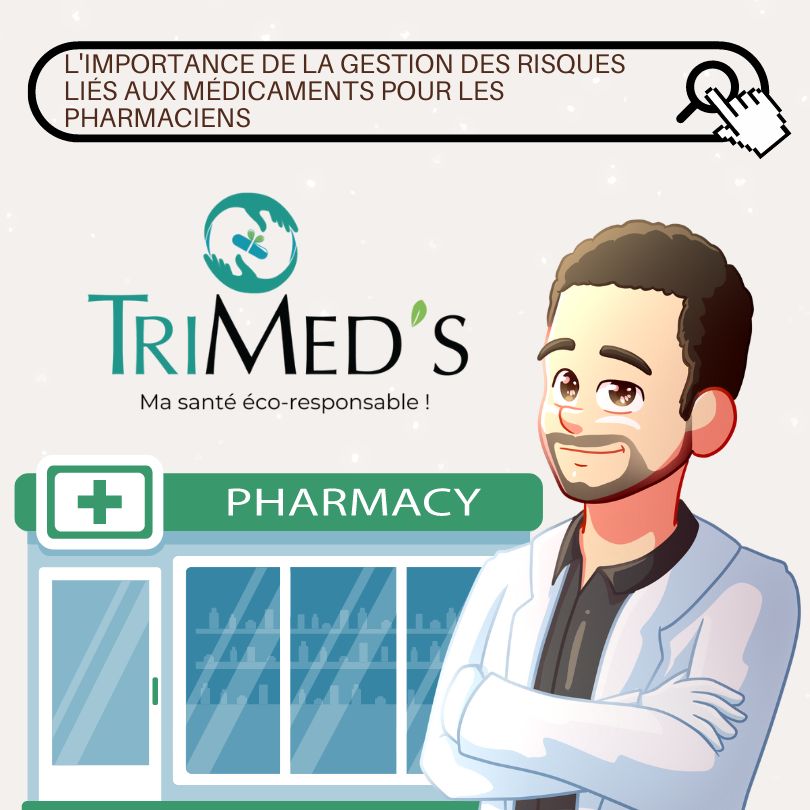
Managing the risks associated with medications is a critical issue for pharmacists. Medications can cause adverse side effects and interact with other medications. Pharmacists play a key role in promoting patient safety by identifying and managing medication risks.
One of the primary responsibilities of pharmacists is to ensure that patients receive the appropriate medications. This includes checking prescriptions and ensuring that the prescribed doses are safe and effective for the patient. Pharmacists must also ensure that medications do not pose risks to the patient due to interactions with other medications or medical conditions. When in doubt, pharmacists can talk with physicians about adjusting doses or changing medications.
Pharmacists also play an important role in educating patients about the use of medications. They inform patients of potential side effects and what to do if they experience adverse reactions. They can also provide advice on how to take medications properly and what precautions to take, such as avoiding alcohol or certain activities that could make side effects worse.
Finally, pharmacists need to be up to date on the latest trends and information about medications, especially with regard to new drug interactions or safety warnings. They must ensure that the drugs they dispense are safe and effective, and that they have not been withdrawn from the market because of safety concerns.
In conclusion, medication risk management is critical for pharmacists. They must ensure that patients receive the appropriate medications, educate patients on the use of medications, and be up-to-date on the latest drug information. Medication risk management is a complex and ever-changing task, but it is essential to ensure patient safety and well-being.
The latest advances in diabetes medications
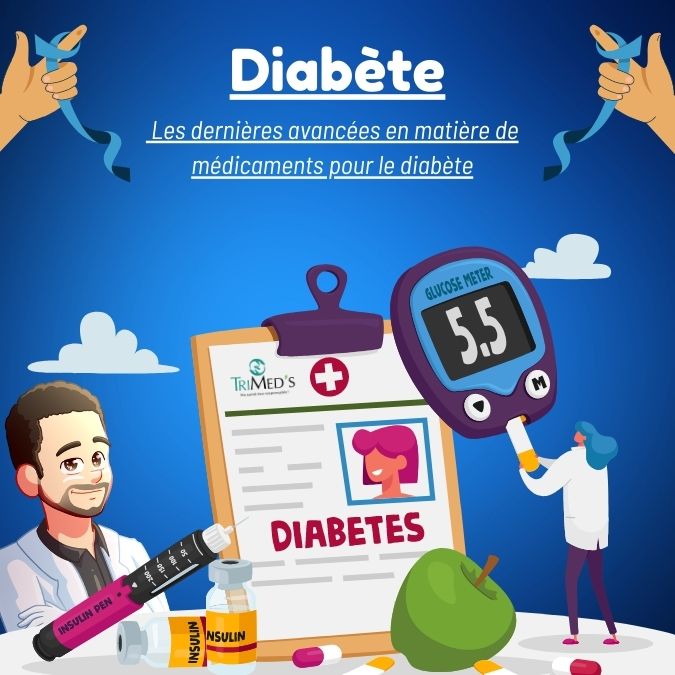
Diabetes is a chronic disease that affects more and more people around the world. Fortunately, scientific and medical advances are leading to a better understanding and management of this disease.
The latest advances in diabetes medications have improved the quality of life for people with the disease. Current medications aim to regulate blood glucose levels by stimulating the production of insulin by the pancreas, improving the body's use of insulin, or preventing excessive glucose absorption from the intestines.
One of the newest medications for diabetes is the SGLT2 inhibitor, which helps control glucose levels by increasing glucose excretion in the urine. This medication is very effective in reducing blood glucose levels in people with type 2 diabetes, but can also be used in combination with other medications.
Fast-acting medications, such as short-acting insulin, can also be used to treat diabetes. This type of medication can be administered subcutaneously and helps regulate blood glucose levels immediately after a meal.
It is also important to mention innovative technologies for insulin delivery, such as insulin pens and insulin pumps, which allow people with diabetes to better control their disease.
In conclusion, advances in diabetes medications have significantly improved the quality of life for people with diabetes. New medications, as well as innovative insulin delivery technologies, allow people with diabetes to better control their disease and live a more normal life. However, it is still important to consult a physician to determine the best treatment for each person with diabetes.
The Zero Waste
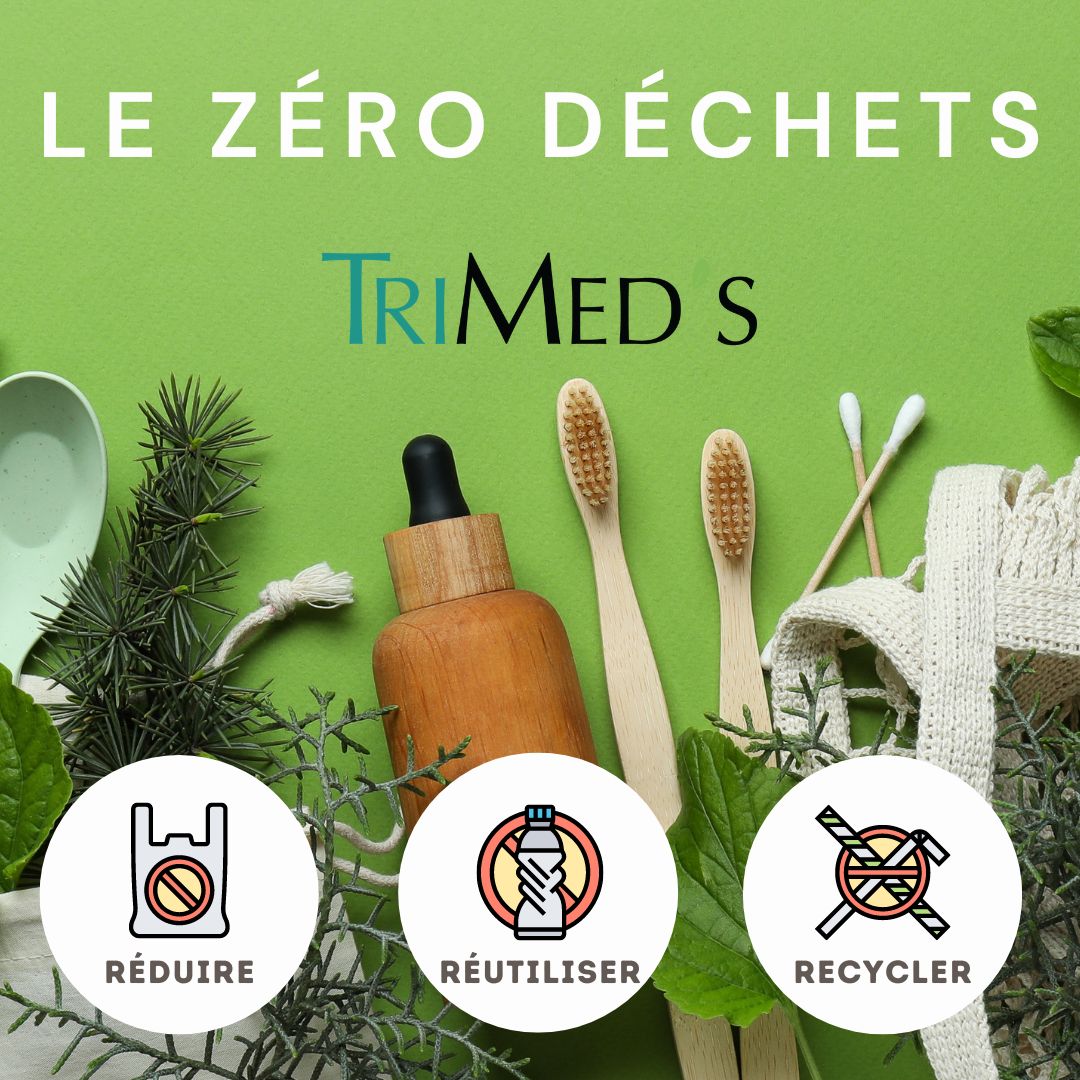
Zero waste is an ecological movement that aims to reduce the amount of waste we produce. The main objective is to minimize the waste that ends up in landfills, oceans or is incinerated. The concept is to rethink the way we consume, produce and dispose of our waste by adopting a more sustainable lifestyle.
So how do we get started with zero waste?
To reduce our waste production, there are several sustainable alternatives to disposable products including plastic bags, plastic bottles, disposable utensils, plastic packaging, etc. We can replace these items with sustainable alternatives. We can replace these items with more sustainable alternatives such as reusable cloth bags, reusable stainless steel or glass water bottles, stainless steel or bamboo utensils, reusable packaging, etc.
Proper recycling and composting can also reduce waste production.
Recycling allows for the reuse of materials that can be made into new products, such as paper, glass, plastic and metal. And in order for recycling to be effective, it must be done correctly, so it's important to separate recyclable waste and place it in the proper recycling bins. Make sure you know the sorting rules of your city or community to recycle properly.
Composting is the process of breaking down organic waste into nutrients that can be used to fertilize plants. We can separate organic waste, such as food scraps and leaves, and compost them instead of throwing them away.
Reuse: Before you throw something away, think about how you can reuse it. Cans, glass jars, cereal boxes and other items can be used for storage or for craft activities for example.
But before all that, it is necessary to think of reducing its consumption to avoid the excess of purchase which will inevitably lead to throw away especially if the products are perishable and to avoid to the maximum to buy products of single use intended to be thrown away as soon as used.
Zero waste does not only concern individuals but must affect the entire ecosystem of society in order to obtain visible results on the environment and on the economy.
Professionals must also commit themselves as major actors of the society to produce by reducing their waste. Moreover, several actors have already made it their line of conduct: products made from natural ingredients, recyclable packaging, products sold in bulk without packaging ...
TriMed's wants to be one of the solutions brought to health professionals to help them reduce their waste. Indeed, recovering unsold products from pharmacies to sell them at discounted prices or to give them away instead of throwing them away is a solution not only to reduce waste and thus preserve the environment but also a solution to help save money and reduce losses.
Discover our solution, visit our website
How to successfully collaborate with other pharmacy professionals?
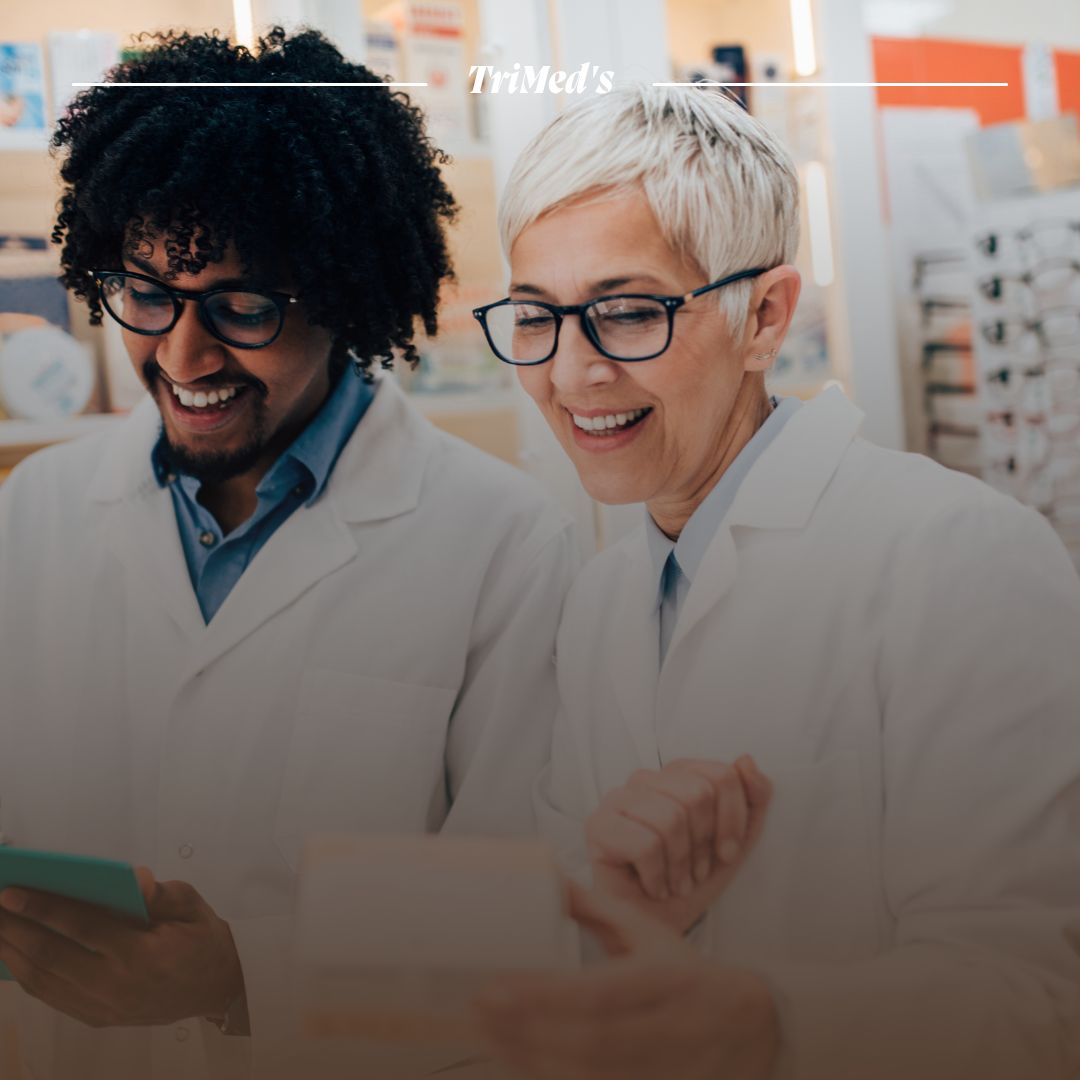
As a pharmacist, collaboration with other pharmacy professionals is essential to providing quality care to our patients. Pharmacy team members often include pharmacists, pharmacy technicians, pharmacy assistants, compounders, clinical pharmacists and hospital pharmacists. Each member of the pharmacy team brings different skills and knowledge, and it is important to work together to ensure the well-being of patients.
In addition, pharmacists often work with other health care professionals (physicians, nurses, laboratories, etc.) and it is equally important to work successfully with them to ensure the best service to the patient.
To do this, here is a list of tips that may be helpful:
Communicate regularly:
Communication is the key to a successful collaboration. As a pharmacist, you may need to work with nurses, physicians and other health care professionals. It is important to maintain regular communication with these professionals to ensure that you are all on the same page. This may include regular meetings, emails or phone calls to discuss patient cases and treatment protocols.
Communication is essential in any professional relationship. So even among colleagues, it is important to be open and transparent and especially to share relevant patient information.
Respect each other's roles and responsibilities:
Each pharmacy professional has specific roles and responsibilities in patient care. It is important to understand these roles and responsibilities and to respect each other's work. For example, it is important to establish clear protocols for communication and collaboration so that everyone knows what is expected of them. For example, set up regular meetings to share patient information, discuss treatment plans and other relevant topics.
Build positive working relationships:
Whether within your team or in your relationships with other external professionals, it is important to keep and maintain positive relationships, avoid conflict and negative criticism, and encourage open and respectful communication to ensure productivity and respect for each other's interests.
Clearly define roles and responsibilities within your team:
It is important to clearly define the roles and responsibilities of each member of the pharmacy team to avoid conflict and mistakes. Make sure everyone understands what is expected of them and their role in providing quality patient care.
Collaborate closely:
Working closely with other members of the pharmacy team is essential to providing quality patient care. But working closely with other external professionals is equally important to ensure that all stakeholders are involved in the health and well-being of patients. For example, your drug distribution partners will be there when you need them, and will communicate any issues related to delayed delivery or potential shortages in advance.
Share knowledge and skills:
Each member of the pharmacy team brings different skills and knowledge. Share your knowledge and skills with other team members to improve the quality of patient care.
Be flexible and adaptable:
Patient needs can change quickly, so it's important to be flexible and adaptable. Most importantly, be cohesive with your team so that when problems arise or emergencies arise, you can all work together to find a quick and effective solution.
Establish treatment protocols:
Establishing standardized treatment protocols can help ensure that all pharmacy professionals work together consistently and effectively. These protocols can include guidelines on how to treat certain conditions or manage specific medications. By developing these protocols together, you can ensure that everyone involved understands each other's expectations and responsibilities.
Share patient information:
Sharing patient information is critical to successful collaboration among pharmacy professionals. Pharmacy professionals must have access to all relevant patient information to provide quality care. This may include information about medical history, allergies, previously prescribed medications and current medications. Make sure this information can be easily transferred between professionals through the use of electronic records or direct communication.
Build trusting relationships:
It is important to build trusting relationships with other pharmacy professionals to improve collaboration so you can work together to solve problems and provide quality patient care.
Staying informed:
Pharmacy professionals need to stay current with the latest practices and technologies to provide quality patient care. Participating in continuing education, reading trade publications, and discussing the latest practices with other pharmacy professionals are important to stay current.
In conclusion, collaboration with other pharmacy professionals is essential to providing quality patient care. By understanding the roles and responsibilities of each professional, communicating effectively, coordinating care, building trusting relationships, and staying informed, pharmacists can work with other pharmacy professionals to provide comprehensive, quality patient care.
Essential foods for our beauty

Isn't it often said that "You are what you eat"? Here is a saying that sums up what we are about to say in this article.
Our health, wellbeing and beauty pass above all by our plate.
So, if we want to improve the beauty of our brittle nails, our dry or split hair or our dry or irritated skin, it is better to start looking at our plate.
There are many foods that can help improve the appearance of our skin, nails and hair. In this article, we present you with some examples of diets that you should absolutely incorporate into your eating habits to ensure the good health and especially the beauty of your skin, nails and hair.
1. Foods rich in vitamin C: citrus fruits, berries, peppers, broccoli and cauliflower are all rich in vitamin C. This vitamin is important for the production of collagen, an essential component for healthy, elastic skin.
2. Foods rich in vitamin E: almonds, hazelnuts, spinach and avocados are all rich in vitamin E, which helps protect the skin from free radical damage.
3. Foods rich in omega-3 fatty acids: fatty fish such as salmon, walnuts, chia seeds and flax seeds are rich in omega-3 fatty acids, which help maintain healthy skin and hair.
4. Biotin-rich foods: eggs, nuts, seeds, legumes and green leafy vegetables are all rich in biotin, which helps maintain healthy hair and nails.
5. Zinc-rich foods: oysters, red meat, pumpkin seeds and lentils are all rich in zinc. This helps maintain healthy skin and promote hair and nail growth.
6. Antioxidant-rich foods: fruits and vegetables such as berries, citrus fruits, spinach, broccoli and carrots are rich in antioxidants that help protect the skin from free radical damage.
7. Water: It is also important to drink enough water to ensure proper hydration of the skin and hair. Water also helps to eliminate toxins from the body to keep us healthy.
Discover a selection of food supplements made to enhance your skin and sold at TriMed's at attractive prices:
How can we help patients to better understand their prescriptions?

As a pharmacist, it is important to ensure that patients understand their prescriptions. Inadequate understanding of medication instructions can lead to medication errors and medical complications. Here are some tips to help patients better understand their prescriptions:
Read and explain the written instructions on the prescription
When patients bring their prescriptions to the pharmacy, the pharmacist should begin by carefully reading the written instructions on the prescription. The pharmacist should ensure that the information is clear and accurate and that the dosage and frequency of use are appropriate for the patient's condition.
The pharmacist should then explain the instructions for taking the medication to the patient, using simple, understandable language. The pharmacist can also provide information about possible side effects and precautions.
Use visual aids
Visual aids such as pictures of medications, brochures and instructional videos can help patients better understand their prescriptions. The pharmacist can also use diagrams to illustrate the dosage and frequency of medications.
Explain drug interactions
Pharmacists should inform patients of potential drug interactions with other medications they are already taking. He or she should also inform the patient of foods or drinks that may affect the effectiveness of the medication.
Answer the patient's questions
The pharmacist should be available to answer any questions the patient may have about their medications. As mentioned above, he or she must take the time to explain the instructions for taking the medication and the precautions to be taken. But also take the time to answer questions that may arise throughout the explanations in order to reassure, advise and especially prevent misuse of the medication.
Inform the patient about the storage conditions of their products
Some medicines cannot be kept for a long time after opening, such as eye drops, magistral preparations and others. Others must be kept in a cool place (in the refrigerator) and others have a long shelf life if they are kept in a dry place, far from light and heat sources. Thus, knowing all this information is essential for a patient to use his medication efficiently and to protect himself from any danger linked to the bad conservation of his health products.
Inform patients of the facilities available for the collection of unused medicines and used medical equipment.
All pharmacists should take the time to inform their patients of the existence of a partner organization, Cyclamed, which collects expired or unused medications in order to encourage them to bring their unused medications back to the pharmacy and not to throw them away in the normal garbage. Any patient receiving injections at home should also be provided with a DASRI box to collect materials such as syringe needles to avoid accidentally contaminating cleaners by throwing them in the trash. These are major risks that must be prevented through information and communication.
In summary, helping patients better understand their prescriptions is an important part of the pharmacist's role. By providing clear and accurate information, using visual aids and answering patient questions, and by providing preventive advice, the pharmacist can help avoid medication errors and improve patient health.
What happens to unused or expired medication?
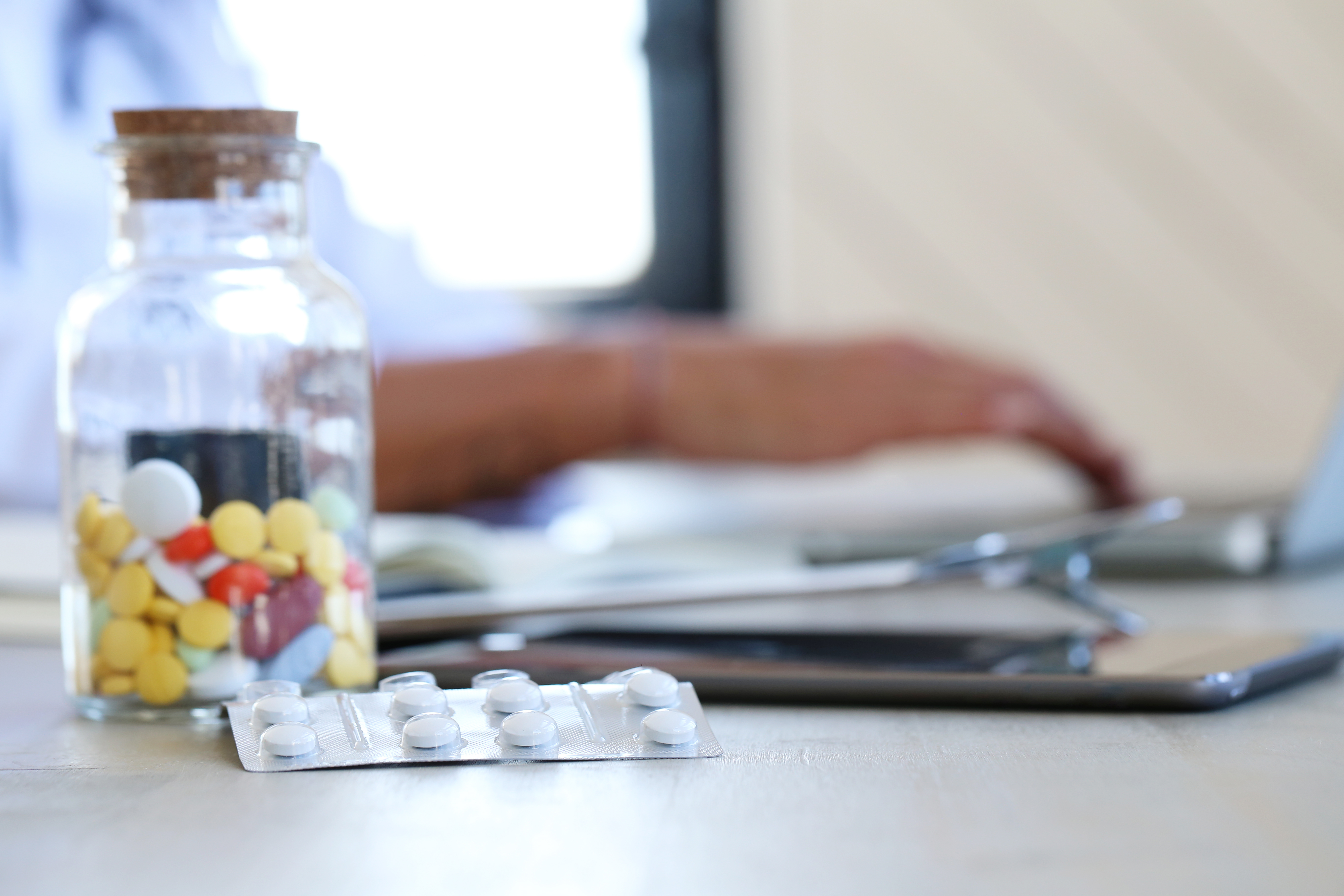
Unused and expired medicines should not be thrown in the garbage can or flushed down the toilet, as they may contaminate the environment or be used inappropriately.
They must be returned to the pharmacy: pharmacies agree to take them back and then pass them on to specific take-back programs for unused medicines, so that they can be disposed of in the safest possible way, from both a health and environmental point of view.
Some medicines, notably those not sold by pharmacies and soon to expire, can be taken back by their manufacturers (laboratories) for disposal by their own means.
In all cases, incineration is the most widely used method of safe disposal.
In France, the management of unused or expired medicines is mainly carried out by an organization called Cyclamed. Cyclamed is an association approved by the French authorities to collect and safely dispose of medicines returned to pharmacies. Here's how the Cyclamed system works:
1. Collection from pharmacies: Pharmacies in France have special containers where patients can return their unused or expired medicines. These containers are supplied by Cyclamed and bear the association's logo.
2. Sorting and grouping: Once the medicines have been returned to the pharmacy, they are sorted according to their chemical composition and therapeutic category. They are then grouped together in specific packaging to facilitate further processing.
3. Safe destruction: Cyclamed works with companies specialized in the disposal of medical waste to ensure the safe destruction of collected medicines. Medicines are incinerated at high temperatures in approved facilities, in compliance with environmental and health regulations.
4. Monitoring and regulations: Cyclamed is subject to strict regulations governing the collection, transport and disposal of medicines. The association is regularly audited by the relevant authorities to ensure compliance with current standards.
Although the Cyclamed system enables the proper management of unused or out-of-date medicines, and remains the best way of doing so for the time being, it should not be forgotten that the incineration of medicines can have an impact on the environment. It can generate emissions of atmospheric pollutants and contribute to air and soil pollution.
It's true that today, the incineration of medicines is carried out in specific, regulated facilities, designed to minimize these negative impacts as much as possible, but it's important to point out that there is no such thing as zero impact, and that the best way is still to reduce the quantity of discarded medicines as much as possible, in order to reduce the volume of waste.
With this in mind, TriMed's was born, a collaborative platform that enables you to contribute to reducing healthcare product waste.
If you're a pharmacist, you can use it to resell your unsold products, maximizing the chances of them being used rather than thrown away.
If you're an individual, you can use it to buy anti-waste products to save them from going to waste and guarantee their use. You don't buy a short-dated product to forget about in the cupboard, do you? It will be a product for immediate use, which will reduce the risk of it going unused, then expiring and being thrown away.
Want to find out more? Visit www.trimeds.fr
6 questions about diabetes type 1

1. What is diabetes type 1 ?
Type 1 diabetes is a chronic autoimmune disease in which the immune system attacks the beta cells of the pancreas, which are responsible for producing insulin. As a result, people with type 1 diabetes do not produce insulin, which leads to a build-up of glucose in the blood, resulting in high blood sugar levels, which can cause serious health problems.
2. What causes it ?
The precise causes of diabetes type 1 are not fully understood, but it is widely accepted that genetic and environmental factors play a role. There appears to be a genetic predisposition to developing the disease, and environmental triggers that can lead to the destruction of beta cells in the pancreas.
3. What are the signs ?
Common signs and symptoms of diabetes type 1 include excessive thirst, frequent urination, unexplained weight loss, intense fatigue, blurred vision, frequent infections, slow wound healing and constant hunger. These symptoms are due to hyperglycaemia (high blood sugar levels) resulting from a lack of insulin to regulate glucose in the blood.
4. How can it be prevented ?
Diabetes type 1 generally cannot be prevented, as it is an autoimmune disease that develops largely as a result of complex genetic and environmental factors.However, research into prevention is ongoing, including studies into modifying the environment to reduce the risk in high-risk individuals.
5.How is it treated ?
The main treatment for diabetes type 1 is to replace the insulin that is missing.This is usually done by daily insulin injections or by using insulin pumps. The aim of the treatment is to maintain blood sugar levels within a normal range.In addition to insulin, a balanced diet, regular exercise and careful monitoring of blood sugar levels are essential to manage the disease.
Education on diabetes management and regular medical check-ups are also important to prevent long-term complications.
6. What are the risks associated with diabetes type 1 ?
Untreated or poorly managed diabetes type 1 can lead to serious complications, including cardiovascular disease, kidney problems and eye problems.
6 questions about Type 2 Diabetes

What is Type 2 Diabetes?
Type 2 diabetes is a chronic medical condition characterised by insulin resistance and a progressive deficit in insulin production by the pancreas. This results in high blood sugar levels.
What are the symptoms of Type 2 diabetes?
- Frequent thirst and urination: People with type 2 diabetes may feel excessively thirsty and need to urinate frequently.
- Fatigue and Weakness: Glucose does not enter the cells properly, leading to feelings of tiredness and weakness.
- Unexplained weight gain: Despite a normal diet, some people may gain weight unexplainably.
- Blurred vision: Type 2 diabetes can affect vision, causing problems with focusing.
- Slow healing: Wounds may take longer to heal.
What causes type 2 diabetes ?
Type 2 diabetes is often associated with risk factors such as obesity, unbalanced diet, lack of physical activity and genetics. Insulin resistance, where cells do not respond effectively to insulin, is a key factor in its development.
How can Type 2 diabetes be prevented ?
Prevention of type 2 diabetes is based on healthy lifestyle habits. This includes a balanced diet, regular physical activity, weight management and avoiding smoking.
How is type 2 diabetes treated?
Treatment of type 2 diabetes may involve lifestyle changes such as a balanced diet and regular exercise. If necessary, anti-diabetic drugs may be prescribed. In more advanced cases, insulin may also be necessary.
What are the Risks Associated with Type 2 Diabetes?
Poorly controlled type 2 diabetes can lead to a number of complications, including
Cardiovascular problems: It increases the risk of heart disease and stroke.
Kidney problems: Uncontrolled diabetes can damage the kidneys.
Eye problems: It can lead to diabetic retinopathy and other visual problems.
Neurological Complications: Diabetes can cause nerve damage, leading to numbness and pain.
Skin and Healing Problems: Wounds may take longer to heal and skin infections may occur.
It is essential to work closely with healthcare professionals to develop an appropriate treatment plan and regularly monitor blood sugar levels to minimise these risks.
Dietary recommendations for type 2 diabetics

What are good eating habits for diabetics?
As you know, our diet plays an essential role in our health and well-being. In fact, it all starts with what we eat, and many foods can provide solutions and prevent health problems. So let's take a look at diabetes from this angle and ask ourselves what good eating habits you can adopt to keep your diabetes under control.
First of all, you need to :
1. Control carbohydrates: Carbohydrates have a direct impact on blood sugar levels. That's why you need to choose complex carbohydrates such as wholemeal cereals, vegetables and unsweetened fruit, and limit simple carbohydrates such as sweets and sugary drinks.
2. Eat fibre: Fibre-rich foods such as vegetables, fruit, pulses and wholegrain cereals can help stabilise blood sugar levels by slowing the absorption of carbohydrates.
3. Control portion sizes: Watch portion sizes to avoid over-consumption of carbohydrates and calories, which can affect blood sugar levels and weight.
4. Choose lean protein sources: Opt for lean protein sources such as skinless chicken, turkey, fish, eggs, low-fat dairy products and pulses.
5. Opt for the right fats: Choose healthy fats such as avocados, nuts, seeds and unsaturated vegetable oils (olive oil, rapeseed oil). Avoid trans fats and reduce your intake of saturated fats.
6. Spread your meals out: Eat several small meals throughout the day to avoid large fluctuations in blood sugar levels.
7. Limit salt and processed foods: Reduce your intake of sodium-rich foods, as they can affect blood pressure. Avoid processed foods high in added sugars and saturated fats.
8. Hydration: Drink plenty of water throughout the day.
9. Monitor glycaemic index: Foods with a low glycaemic index can help keep blood sugar levels stable. Vegetables, legumes and wholegrain cereals generally have lower glycaemic indices.
10. Keep regular track: Keep a food diary and monitor your blood sugar levels to identify foods that influence blood sugar levels positively or negatively.
And if we could give you some simple practical advice, it would be to :
- Make sure you eat .3 meals at regular times throughout the day + a snack at 10 a.m. and 5 p.m.
- Always carry a quick-acting sugar.
- Avoid alcohol, which can lead to hypoglycaemia
- Practise regular physical activity for 30 to 60 minutes 3 times a week and eat a snack before or during sustained exercise.
Finally, it's worth remembering that each person has different nutritional needs. Working closely with a health professional or dietician can help to develop a meal plan tailored to each person's individual needs and condition.
Mobile applications to help manage diabetes

Digital developments have profoundly transformed many aspects of our daily lives, and the healthcare sector is no exception. With the emergence of innovative technologies, mobile applications now play a crucial role in promoting health, monitoring medical conditions and improving access to care.
In an increasingly connected world, health apps offer quick and convenient access to a wealth of medical information. Through dedicated platforms, users can consult reliable resources, articles and advice from healthcare professionals, boosting health awareness and education.
One of the areas most impacted by these advances is diabetes management. Specialised apps can monitor glucose levels, plan meals and calculate insulin doses, simplifying the lives of diabetics and improving the management of their disease.
In our video today, we'll try to introduce you to some useful apps that make life easier for people with diabetes and support them in better managing their blood sugar levels.
- Gluci-check : An application that helps diabetics treated with insulin to manage their condition more effectively. It allows you to manage and monitor your blood sugar levels, record your insulin doses and receive personalised advice to help you control your condition more effectively.
- Mon Glucocompteur : An application that allows diabetics to monitor their blood sugar levels at different times of the day, making it easier to manage and adjust their treatment according to variations in blood sugar levels.
- VeryDiab : A diabetes diary that helps type 2 diabetics on insulin to manage their condition. It keeps a record of data relating to blood sugar levels and treatment.
- DiabetoPartner : An application designed for type 2 diabetes patients who are not on insulin. This application offers tools for monitoring blood sugar levels, recording meals and tracking physical activity, thereby helping to improve disease monitoring.
- Diabète Gourmand : Helping you to balance your meals with specific recipes and by calculating the carbohydrate content of foods.
- DiabVoyage : An application to help you manage your diabetes when travelling, offering advice on documents and medicines to take with you when travelling, advice on storing insulin, practical information about your destination country and an exchange group.
- My espace diabète : It's an application that helps you keep better track of your diabetes with the help of your pharmacist. It makes it easier to talk to your pharmacist, book appointments and order medication.
So don't hesitate to like our video and share these digital tips with others to spread the word and help as many diabetics as possible to better manage their condition on a day-to-day basis.


